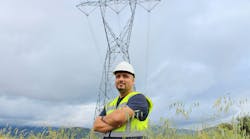The confluence of significant workforce trends demands our collective attention.
Savvy demographers have long pointed to the practical impacts of baby boomer retirements on business continuity in general. Before this wave actually began, the domestic power industry understood that it would be particularly hard hit by an aging workforce nearing retirement.
The power industry also witnessed related trends over recent decades. Fewer, university-level electrical power engineering programs were on offer, resulting in fewer qualified power engineers entering the field. And competition from alternative career options in internet-related companies, social media, and the microelectronics that support them further winnowed the power industry’s prospects.
By the time the Energy Policy Act of 2005 was passed, the U.S. Department of Energy (DOE) was required to report on workforce trends in the power and energy industries. The DOE found that hiring qualified engineers would become particularly challenging for electric utilities because of the aforementioned trends. The DOE also found that the power industry was actively pursuing solutions by fostering STEM-related education, including electrical engineering programs, and renewing its pitch for electrical engineers to pursue energy-related careers. Today, these strategies remain a major focus of the power industry.
That’s the good news. But workforce attraction and retention challenges will never be a checklist or checkbook issue for the power industry. Whatever gains we have made have been hewn from hard rock. The fact remains, workforce attraction and retention challenges require consistent, ongoing, CEO-level engagement. The benefits accrue not only to an individual utility, but also to the power industry as a whole and, indeed, to our increasingly digital society. Such efforts are not a distraction from higher priorities. Opinions vary, of course, but I’d argue that consistent engagement with workforce challenges should be among a CEO’s top priorities.
Personally, I view workforce attraction and retention challenges as an existential, business continuity challenge for utilities and related organizations. Thus, I have identified four areas for CEO engagement that, in my considerable experience, will pay dividends.
- Understand your organization’s evolving needs. New utility business models will drive new business processes. New technology is being introduced and new skill sets are required. The time is ripe for a holistic approach that addresses all these needs in a unified manner.
- Assess and adopt a knowledge management platform to formalize processes and procedures for retaining, curating, and transferring knowledge. Both the art and science of managing a utility’s engineering and economic challenges need to be captured now, before generational retirements occur.
- Put people face-to-face to achieve knowledge transfer. A knowledge management platform supports but does not replace face-to-face mentoring and, equally important, reverse mentoring. The latter brings the most recent education — often in useful software and social media applications — from new graduates to veteran engineers.
- CEOs and their recruiters must understand millennials’ oft-stated need for socially and environmentally beneficial career roles. Millennials seek a clear career path and advancement commensurate with their abilities. Our industry must build interest in energy-related careers by noting their role in environmental and social responsibility.
Let’s examine each of these suggested solutions in more detail.
Your Utility’s Evolving Needs
The trend toward deregulation means we must craft a more market-oriented and therefore, more consumer-oriented power industry. (See my recent T&D World article, “Engaging and Retaining Consumers.”) Stagnant load growth requires developing a menu of value-added services for which consumers are willing to pay. Formerly undifferentiated ratepayers are suddenly becoming “markets of one,” which forces utilities into uncharted waters. These identifiable trends, among others, will drive an evolution in the utility business model, particularly among investor-owned utilities. Business model changes beget business process change.
Do your utility’s executive management skill sets include the ability to guide business model and process change? If not, what is your plan to meet this challenge? I suggest identifying your evolving needs, the skill sets to meet them and the people with those skills sets — perhaps from outside the industry — should lead to attracting vital new talent. Often, consultancies are retained to assist an organization in business process change, but the utility itself must envision and develop the value propositions and business model that drive business process change. You cannot farm out your raison d’être.
The late 20th century saw the rise of electrical engineers with MBAs who understood both operations and economics. That’s a good start, but consumer-driven utility business models in rapid evolution face a need to develop compelling value propositions for a commodity that enables a digital society. You’ll need to assess precisely what skills are needed for your utility’s likely trajectory and secure that talent.
New Technology Is Being Introduced
Digitization of the grid and associated business processes create massive new streams of operational, business, and customer data, producing a need for big data management and data analytics. The industrial internet of things (IIoT) may enhance access to external data and exacerbate big data challenges. The speed needed for digitally automated responses to changing grid conditions increasingly will require machine learning and artificial intelligence (AI). Recruitment for these challenges will likely focus on industries further along the learning curve. Utilities must offer an attractive, competitive package to lure talent in these emerging technologies.
A concrete example of digital grid challenges is the proliferation of intelligent electronic devices (IEDs) that tie into data communication networks and associated computing facilities. In the past, the installation of IEDs, the design of data networks, and the scope and operation of information technology (IT) typically were assigned to different, siloed departments. In a holistic approach to solving utility challenges, not only will those departments work together closely, some roles will combine previous job descriptions. In this example, a “super-IED specialist” might be required to understand the entire operational chain (for example, protection, communications, former remote terminal unit functions) to ensure the proper provisioning of IEDs, the appropriate network response requirements, and needed computing speed and capacity.
Though drones — more properly “unmanned aerial vehicles,” or UAVs — and robotics for difficult and dangerous tasks provide efficiencies that reduce man-hours and mitigate safety issues, specialized operators will be needed. Skilled drone operators may come from in-house or outside the power industry. In either case, you’ll need a plan before implementing these new technologies. (In a side note, data acquisition by drones and robotics and its management by utilities is far from uniform. The power industry needs to develop standards in this area. See my T&D World article, “Drones and Robots: A Data Management Opportunity.”)
Obviously, digitization and adoption of new technologies, while solving many issues of automation, efficiency, and remote access, also raise the specter of security vulnerabilities. Today, utilities should be grappling with a workforce-based solution. Should a utility have an organization-wide “security czar?” To what degree is cyber- and physical security the responsibility of every employee? Subject matter experts typically agree that “people” are the weak link in most security protocols.
Adoption of a Knowledge Management Platform
Power engineering is both art and science and a utility must document and transfer both from experienced workers before they retire and enable new recruits to access that knowledge. A knowledge management platform can formalize and strengthen the processes and procedures to retain, manage and transfer organizational, operational, and market knowledge. Such a platform will end the nearly oral history-like nature of 20th century knowledge transfer practices, which in the past often involved older workers simply mentoring younger ones.
Currently, knowledge management platforms abound in industry-agnostic form. These software platforms can be customized for the power industry and even for an individual utility. I cannot endorse any particular product or even useful sources of information, so the traditional use-your-search-engine advice applies here. You’ll need a knowledge transfer strategy, a practical plan, organization-wide buy-in, supporting technology — and someone in your workforce to take ownership of this ongoing program.
Be aware that new developments such as augmented reality-based headgear or eyewear hold a great deal of promise. It remains unclear to me whether these devices and the information they can provide workers will truly serve the cause of knowledge transfer. Anything is possible, but I tend to think that these gadgets, as amazing as they may become, will simply be one support tool in a knowledge management and transfer program.
Having introduced the notion of knowledge management technology, I must also mention the corollary to automating the process: the need for people to work face-to-face. I know from deep personal experience that young professionals crave personal interaction with top management. This is a two-way street in which CEOs and other officers can inspire and inform their workers, have first-hand impressions of the rising stars on their team, and get honest feedback. Perhaps a formal process is called for, as in a rotating roundtable lunch or coffee that allows a manageable number of new workers to interact with top management.
Traditional mentoring has a long history of success by pairing experienced and inexperienced individuals in similar roles. Reverse mentoring is also effective. (See this Computerworld Magazine article, “IT puts millennials to work, as mentors,” that discusses GE’s pilot, reverse-mentoring program in which I participated.)
New recruits often bring to the table the latest up-to-date education and knowledge of emerging technologies — think apps for mobile devices, even the integration of social media for operational efficiencies. (See my still-pertinent article, “Integrated system, social media, improve grid reliability, customer satisfaction.”)
Understand Millennials’ Aspirations
By the time we reach the apex of our careers, many of us think we understand most of our environment because of our experience, savvy, shrewdness, and powers of perception. But never underestimate the frequency of counter-intuitive surprises. I refer here to understanding millennials, already the largest single segment of the workforce.
In a survey the IEEE Power & Energy Society (PES) conducted during the time I was president in 2006 to 2007, I discovered to my own surprise that a large swath of millennials stated their need for socially and environmentally responsible and beneficial career roles — above my own generation’s top goal for the most remunerative job we could secure in a location where we preferred to live. This survey also led us to change the name of the IEEE Power Engineering Society in 2008 to the IEEE Power & Energy Society. We found that replacing “Engineering” with “Energy” made a big difference in attracting young professionals.
This finding should inspire utility CEOs and recruiters to hone their recruiting value proposition. Power utilities are the infrastructure supporting a digital society. Our collective aim is environmentally responsible, sustainable energy security, and secure energy. As for the ostensibly “sexier” fields associated with Silicon Valley, impress upon millennials that without secure, sustainable, reliable electricity, the titans of Silicon Valley have nothing! Without innovation in electricity provision, the internet, its applications and supporting devices do not function. Of course, the same argument applies to our economic vitality and the availability of news, entertainment — the works.
Clearly, millennials have options and persuasion is key. Once they’re onboard, in terms of workforce development, I know at least anecdotally that they expect career progress commensurate with their talent and abilities. Determine how to fast-track the most able workers; do not saddle them with time-based processes for advancement. Just as the power industry is moving from time-based to condition-based asset management, so must you advance those worthy of advancement based on their work accomplishments and not based on a fixed time schedule. Turnover, generically, is costly in time and money. Think about the cost and lost opportunities of losing a star forced to tread water because of archaic organizational practices.
This guidance applies as well to external activities. Workforce development should include support for millennials to participate in national and international organizations with programs that combine experienced and less experienced engineers and project managers. In my own experience, getting young engineers involved in IEEE and CIGRE working groups, for example, provides immeasurable value in providing young workers with direct and osmotic knowledge transfer opportunities.
Finally, a word on the proverbial pipeline. It only exists and works for both parties if we provide consistent support. For instance, the IEEE Power & Energy Society’s Scholarship Plus initiative has since 2011 provided financial assistance, recognition, and industry exposure to students worldwide who choose to focus on power and energy within the electrical engineering field. The IEEE PES Careers for Employers online program helps employers meet their workforce needs by connecting them with electrical engineering students with a demonstrated interest in the field.
Conclusion
Electricity is the lifeblood of our lifestyles, our economy, our security. It’s an exciting and ever-evolving field and CEOs must seize every opportunity to impress students, graduates, and young engineers with the field’s opportunities, responsibilities, and value.
Workforce trends, however, spell out an urgent priority for utility leadership: capture, manage, and transfer organizational knowledge from retiring, experienced workers to current workers, and attract and retain new talent with skill sets needed for 21st century challenges.
To do so, a utility must link its role and values to social and environmental responsibility, which are millennial priorities for career choice, even over compensation. A finite number of engineering graduates are assessing their prospects in various industries; power and energy enables a sustainable, digital society. Consistent engagement and smart messaging will attract able workers and future leaders.
Apropos of these imperatives, I would add that great managers are not born, they must be trained to manage well. New, young recruits have options. You must ensure that they not only have a career path, but that the speed of their ascendance through the ranks is commensurate with their talents. Stars will not endure arbitrary timelines for their professional development.
Workforce issues lie at the heart of a utility’s ability to perform, evolve, and meet marketplace pressures. Perhaps the foregoing will inspire you to keep them at or near the top of your to-do list. Our collective future is riding on it.


